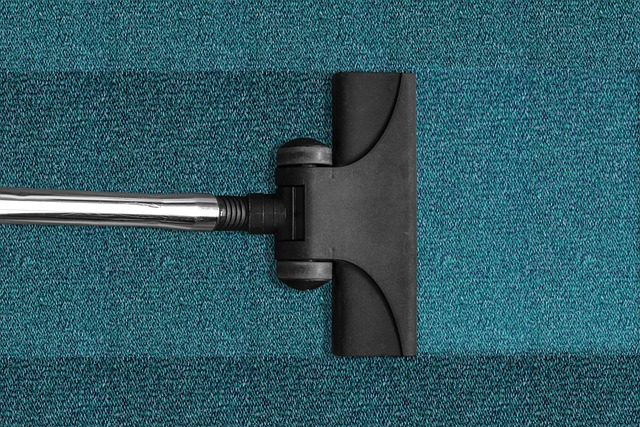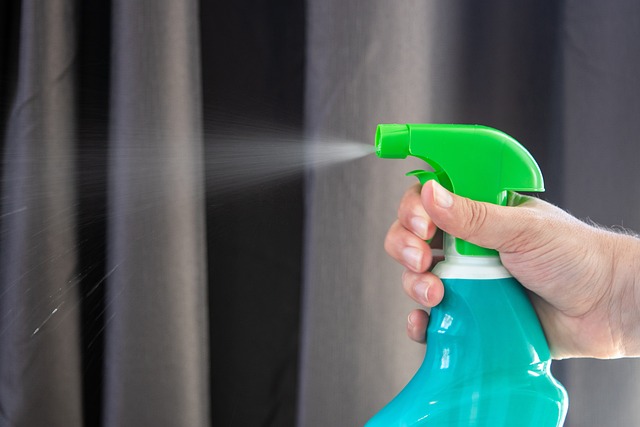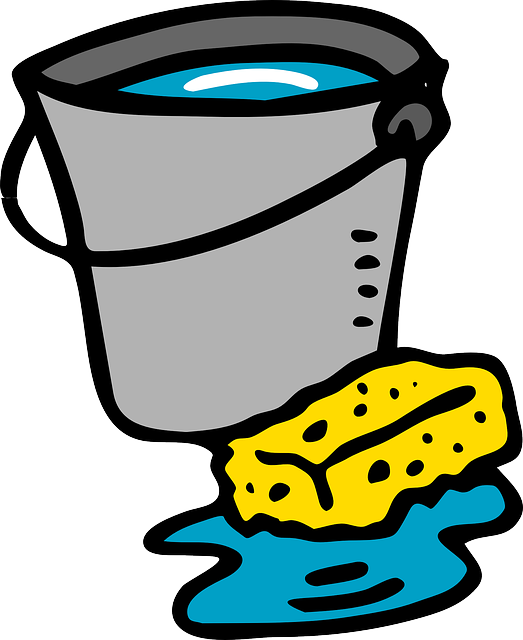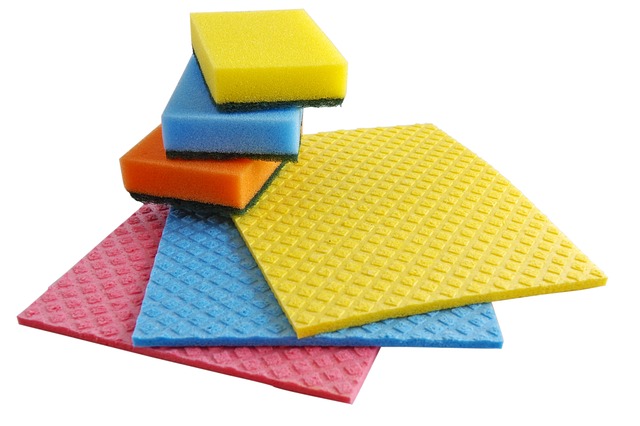Grout and tiles, despite their aesthetics, accumulate dirt from mold, mildew, calcium deposits, and everyday activities. Using natural solutions like vinegar, baking soda, and lemon juice is beneficial for both your home and the environment, avoiding harsh chemicals that can damage surfaces or leave residues. A step-by-step guide recommends preparing a paste of vinegar and baking soda, letting it sit, then scrubbing vigorously with a squeegee. Common mistakes to avoid include using abrasive tools and neglecting thorough rinsing. Real-life transformations show the effectiveness of these natural solutions, while proper maintenance through regular cleaning, sealing, and prompt addressing of issues ensures grout and tiles remain in pristine condition.
Tired of seeing your once-vibrant tiles dulled by grime and grout stains? Discover the power of natural solutions for cleaning dirty grout with our comprehensive guide. We explore effective green cleaning methods, from understanding the causes of grout dirt to providing a step-by-step guide and essential tools. Learn how eco-friendly techniques can restore your space, avoid common mistakes, and even see inspiring case studies—all while maintaining longevity and cleanliness. Embrace natural solutions for a fresh, healthy home.
Understanding Grout and Tile Dirt: Causes and Types

Grout and tiles, while aesthetically pleasing, can become dirty over time due to various factors. Understanding the causes and types of dirt is essential when seeking natural solutions for cleaning dirty grout. One common issue is mold and mildew growth, often found in damp areas like bathrooms, caused by standing water and poor ventilation. This organic matter thrives in dark, humid environments, leaving behind discoloration and an unpleasant odor.
Another type of dirt is calcium buildup, resulting from hard water. Over time, minerals accumulate in the grout lines and tiles, creating a white, powdery substance known as scale. This occurs naturally due to the composition of water in certain regions. More deliberately, there’s also dirt from everyday activities like tracking in soil, droplets from mopping, or even pet accidents, which can lead to stained or discolored grout.
Benefits of Natural, Green Cleaning Solutions

Using natural solutions for cleaning dirty grout offers a multitude of benefits, both for your home and the environment. These eco-friendly alternatives eliminate the need for harsh chemicals, reducing potential health risks and minimizing ecological impact. Many conventional cleaning products contain toxic substances that can persist in the air, potentially causing respiratory issues and skin irritation. Natural solutions, on the other hand, provide a safer, more sustainable option.
Natural cleaners are effective at removing dirt, stains, and algae buildup from grout without damaging surfaces or leaving behind harsh residues. They often harness the power of common household items like vinegar, baking soda, and lemon juice, which are not only cost-effective but readily available. By adopting natural solutions for cleaning dirty grout, you contribute to a cleaner, greener home while promoting a healthier lifestyle for your family.
Essential Tools and Ingredients for Eco-Friendly Cleaning

When it comes to cleaning grout and tiles, natural solutions for dirty grout offer an eco-friendly approach that’s safe for both your home and the environment. Essential tools include a good quality microfiber mop or brush, a spray bottle filled with warm water, and a few key ingredients: baking soda, vinegar, and castile soap.
Baking soda acts as a gentle abrasive to scrub away grime, while vinegar’s acidity helps to break down and dissolve soap scum and calcium deposits. Castile soap, a plant-based detergent, provides the cleaning power without harsh chemicals. These simple, renewable ingredients can be combined in various ways to create effective cleaning solutions, making them perfect for maintaining fresh, vibrant grout and tiles without resorting to toxic cleaners.
Step-by-Step Guide to Deep Cleaning with Green Methods

Deep cleaning your grout and tiles with green methods is an effective way to restore their sparkle while ensuring a healthier living environment. Here’s a step-by-step guide to help you achieve clean, vibrant results using natural solutions for that dirty grout:
1. Preparation: Begin by gathering your supplies: white vinegar, baking soda, a squeegee, a stiff brush or sponge, and protective gloves. Remove all furniture from the area to ensure easy access and avoid damaging the floor.
2. Dampen and Scrub: Start by dampening the grout and tiles with warm water. Apply a paste made of equal parts white vinegar and baking soda to the grout lines using your stiff brush or sponge. Let it sit for about 15-20 minutes, allowing the natural acids in vinegar to loosen any built-up grime. Then, vigorously scrub the grout lines using the squeegee or a dampened sponge. For tougher stains, you can use a small toothbrush for targeted scrubbing.
Common Mistakes to Avoid When Cleaning Grout Naturally

When it comes to cleaning grout naturally, many people make common mistakes that could lead to less-than-satisfactory results or even damage to the grout and tiles. One of the biggest blunders is using abrasive cleaning tools or harsh chemicals, which can scratch the grout surface and cause discolouration. Abrasive materials can be too rough on the grout’s protective seal, leading to premature wear and tear.
Another error is neglecting to rinse thoroughly after applying any cleaning solution, whether natural or not. This can result in residue buildup, leaving behind streaks and spots. Always ensure a thorough rinse and, for deeper cleaning, consider soaking the grout for a period recommended by the chosen natural cleaner. Never rush the process; patience is key to achieving clean, fresh-looking grout without resorting to harsh methods.
Case Studies: Successful Green Grout Cleaning Transformations

When it comes to green grout cleaning, real-life transformations tell a compelling story. Many homeowners and professionals alike have successfully restored their tile and grout spaces using natural solutions for cleaning dirty grout. These case studies showcase the power of eco-friendly methods in achieving sparkling results without harsh chemicals.
One such example is a kitchen renovation project where years of stained grout between marble tiles was a major concern. By employing a blend of baking soda, vinegar, and a touch of essential oils, the team achieved a deep clean without damaging the delicate marble surface. Another notable case involves an old bathroom with discolored grout lines that had resisted traditional cleaning methods. Using a homemade paste of lemon juice and sea salt, coupled with patient scrubbing, brought back the natural glow of the tiles, proving that natural solutions for cleaning dirty grout can tackle even the most stubborn stains.
Maintenance Tips for Longevity of Cleaned Grout and Tiles

Proper maintenance is key to keeping your grout and tiles looking their best for years to come. After cleaning, avoid using harsh chemicals or abrasive scrubbers that can damage the surface or erode the grout lines. Opt instead for natural solutions like baking soda and vinegar, which are effective yet gentle on delicate surfaces. Regularly vacuum floors to remove loose dirt and debris, preventing them from settling into grout lines. For deeper cleaning, use a soft-bristled brush to gently scrub away any remaining stains or buildup. Remember, less is more—over-scrubbing can cause damage.
To maintain the shine and protect against future stains, apply a sealant to your grout and tiles every few months. This barrier helps repel water and dirt, making cleaning easier and prolonging the life of your grout. Additionally, keep an eye on any discolored or damaged grout lines and address them promptly. Minor issues can be repaired easily, preventing them from becoming bigger problems down the line. Regular care and attention will ensure your grout and tiles remain in pristine condition, enhancing the overall aesthetic of your space.
